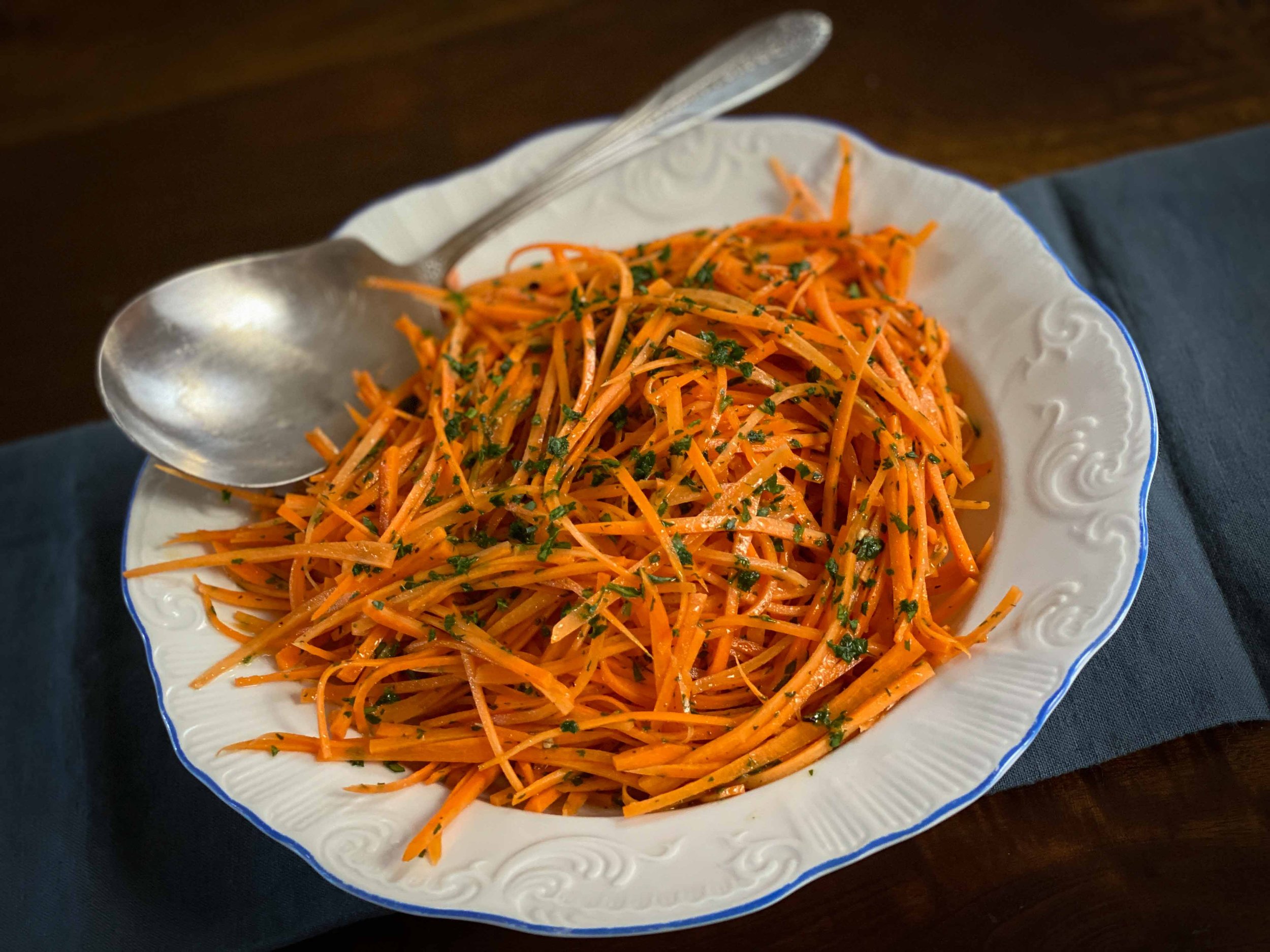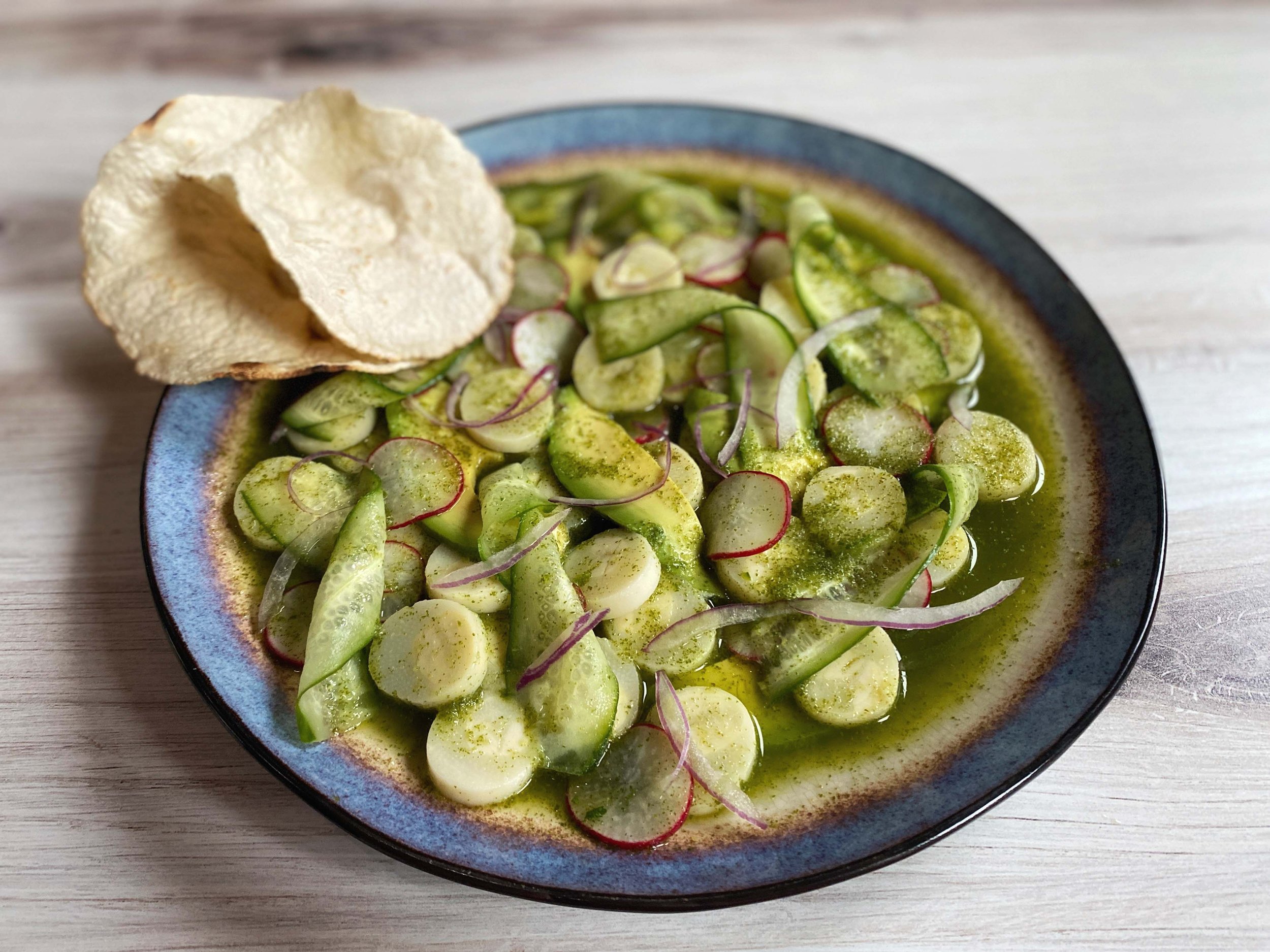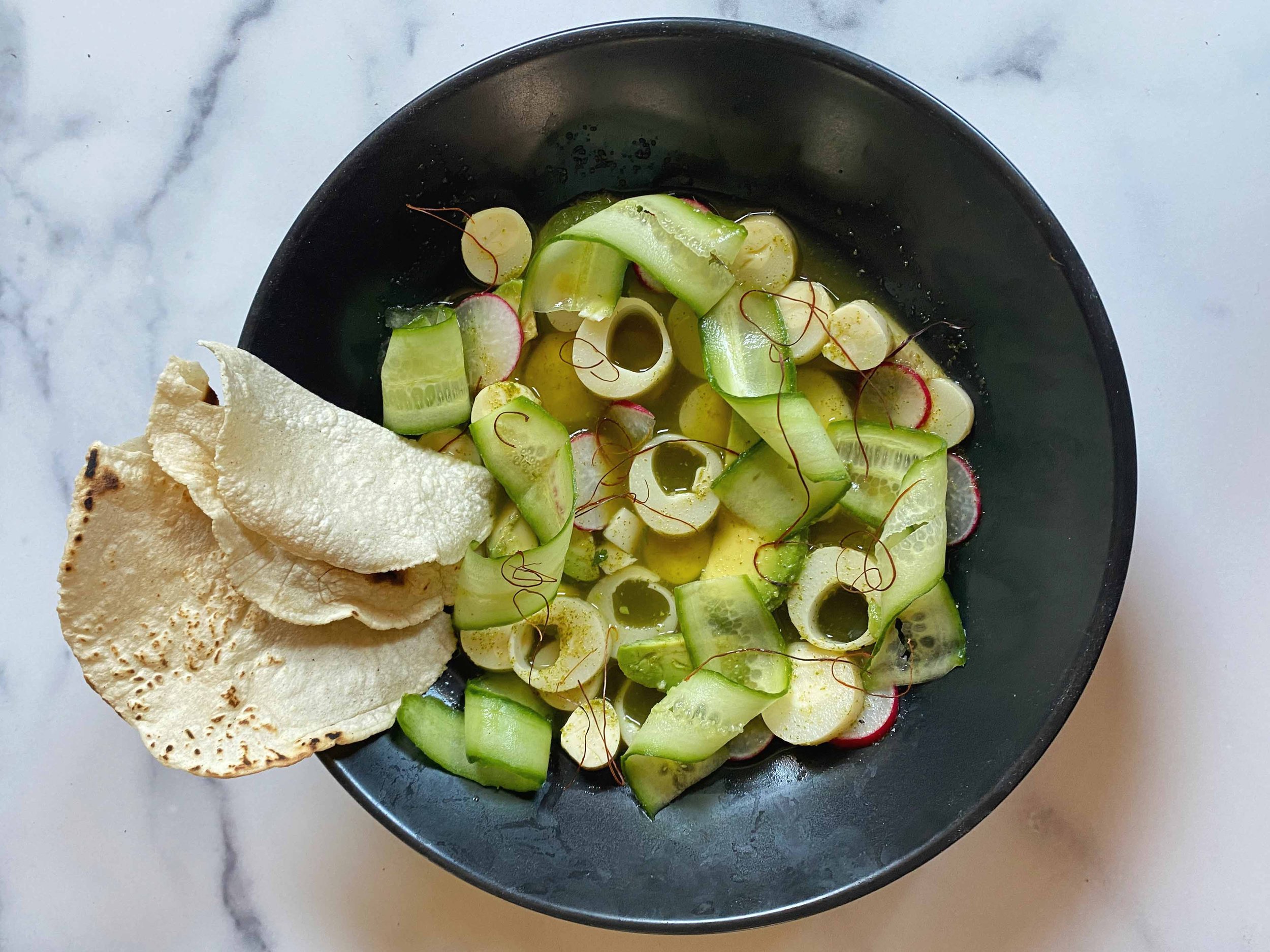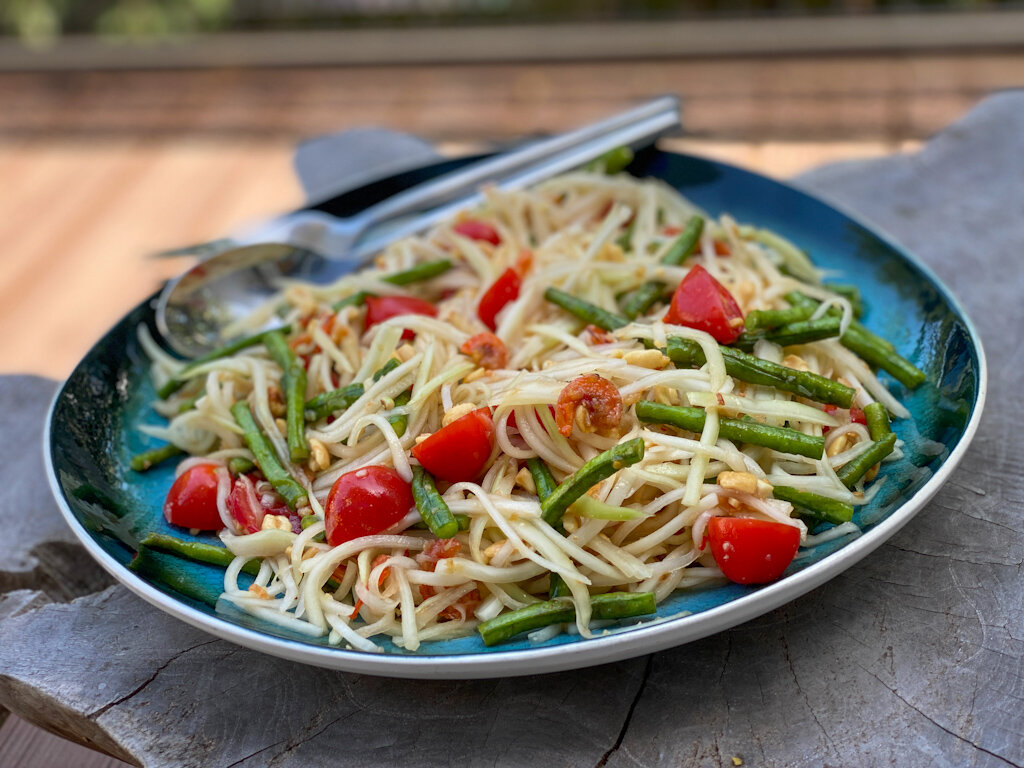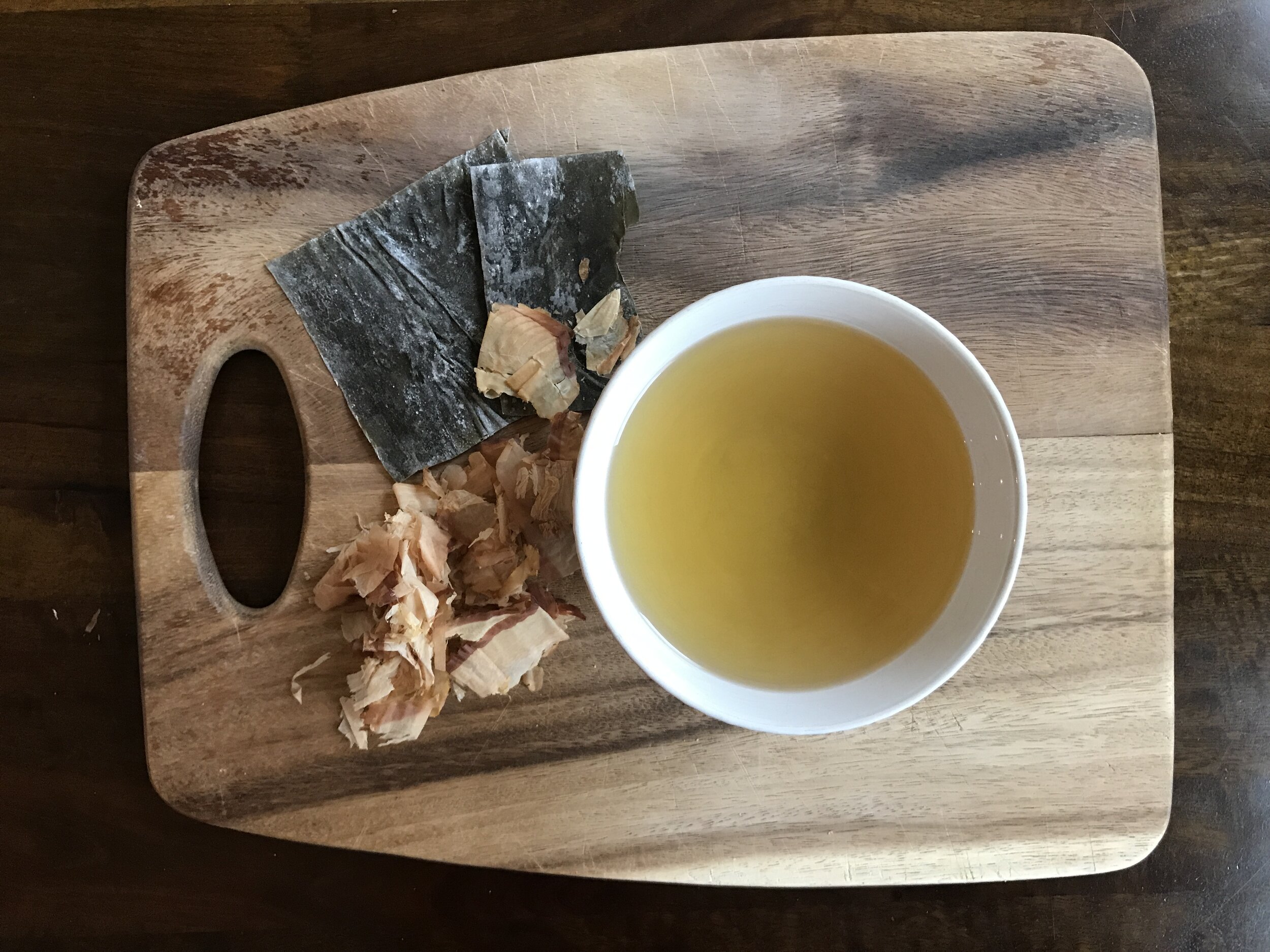By Leslie Brenner
It’s about time carottes râpées got an upgrade. The simple carrot salad, ubiquitous in France, is what French people make when they don’t have anything but carrots in the larder, or their imagination has run dry. Dressed with lemon juice, olive oil, salt, pepper and maybe a little Dijon mustard, it has the potential to be delightful. Yet most French people are anything but excited to see it land on the table.
That’s because it’s usually made with a box grater (râpées means “grated”); it’s a salad whose wood-shavings-like texture nearly always drags it down. At least in France it’s not weighed down by raisins and mayo, the way it might be in America; the French do keep it light and savory.
Those who want to take some time and care with it are capable of culinary magic: elevating an ordinary dish to something you might even serve to friends. They take out their sharpest knife and, after peeling the carrots, cut them into fine julienne. That’s what James Oseland suggested in his 2021 book World Food: Paris.
Julienned carottes râpées
And he’s right — it is much nicer.
But cutting carrots into julienne is also a lot of work, even if you use a mandoline.
Recently I found a better way to elevate the dish: Once you’re done peeling the carrots, just keep going — use the peeler to shave the entire carrot into ribbons. Before long, and with little effort, you’ll have a mountain of ribbons. Dress it with the classic combo of lemon and olive oil, snip some chives on top (or parsley, or chervil, or dill) and you’re good to go. The ribbons give the salad lovely texture. Add some nigella seeds or poppy seeds if you want to give it a little more dimension. But only if you want to. The ribbon treatment alone makes it really nice.
It’s that little bit of culinary magic: You’ve turned the dish into a plate of tangy, fresh, bright, ribbony delightfulness.
And you didn’t have to turn on the stove.
RECIPE: Carottes Râpées, Ribbon-Style


